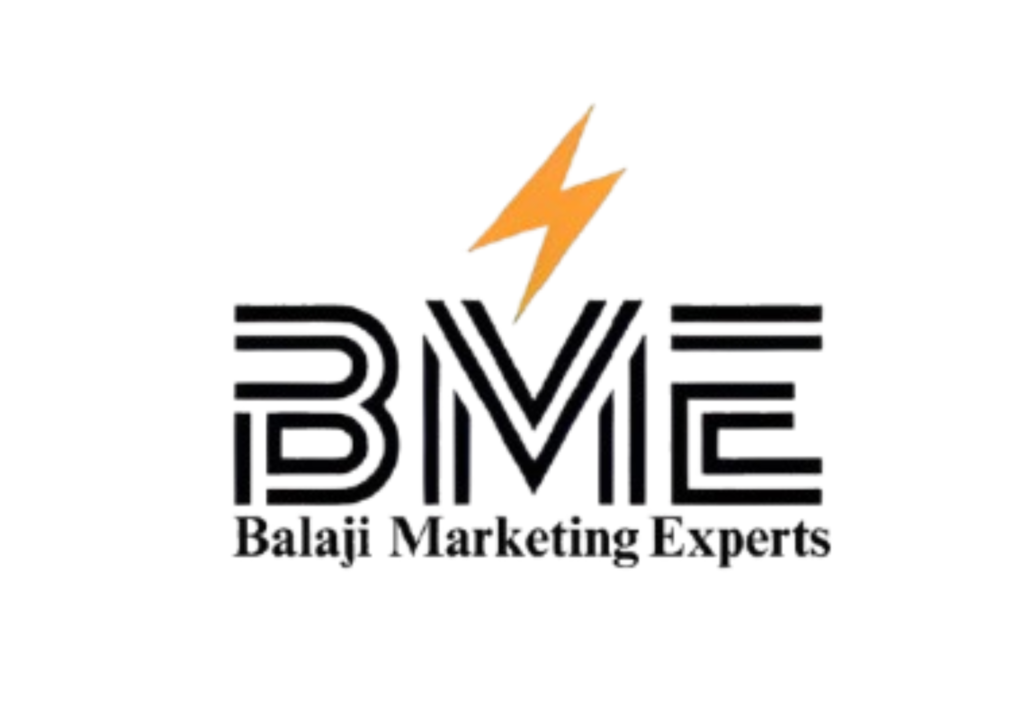Online Reputation Management

Online reputation management (ORM) refers to the practice of monitoring, influencing, and maintaining the perception of an individual, brand, or organization on the internet. It involves strategies and actions aimed at shaping public opinion about a business or person by managing their digital presence across various platforms such as social media, review sites, blogs, and search engine results.
Key Components of Online Reputation Management:
-
Monitoring Online Presence:
-
Regularly tracking mentions, reviews, and comments about a brand or individual across digital platforms.
-
Using tools like Google Alerts or specialized ORM software to stay updated on online discussions.
-
Responding to Feedback:
-
Addressing negative reviews or comments promptly and professionally.
-
Engaging with positive feedback to strengthen relationships with customers or followers.
-
Content Creation:
-
Publishing positive and engaging content such as blogs, social media posts, and videos to improve visibility and reputation.
-
Ensuring consistency in messaging across all online channels.
-
Search Engine Optimization (SEO):
-
Optimizing content to rank higher in search engine results for favorable terms while suppressing negative content.
-
Crisis Management:
-
Developing strategies to handle public relations crises or negative publicity effectively.
-
Building Trust:
-
Encouraging satisfied customers to leave positive reviews and testimonials.
-
Demonstrating transparency and authenticity in communications.
Online reputation management (ORM) refers to the practice of monitoring, influencing, and maintaining the perception of an individual, brand, or organization on the internet. It involves strategies and actions aimed at shaping public opinion about a business or person by managing their digital presence across various platforms such as social media, review sites, blogs, and search engine results.
Key Components of Online Reputation Management:
-
Monitoring Online Presence:
-
Regularly tracking mentions, reviews, and comments about a brand or individual across digital platforms.
-
Using tools like Google Alerts or specialized ORM software to stay updated on online discussions.
-
-
Responding to Feedback:
-
Addressing negative reviews or comments promptly and professionally.
-
Engaging with positive feedback to strengthen relationships with customers or followers.
-
-
Content Creation:
-
Publishing positive and engaging content such as blogs, social media posts, and videos to improve visibility and reputation.
-
Ensuring consistency in messaging across all online channels.
-
-
Search Engine Optimization (SEO):
-
Optimizing content to rank higher in search engine results for favorable terms while suppressing negative content.
-
-
Crisis Management:
-
Developing strategies to handle public relations crises or negative publicity effectively.
-
-
Building Trust:
-
Encouraging satisfied customers to leave positive reviews and testimonials.
-
Demonstrating transparency and authenticity in communications.
-
Importance of Timing in ORM
Prompt Response to Feedback:
Addressing negative reviews or comments quickly can prevent issues from escalating and demonstrate responsiveness.
Timely engagement with positive feedback helps build stronger relationships with customers.
Crisis Management:
Rapid action during a public relations crisis is essential to mitigate damage and control the narrative.
Content Scheduling:
Publishing content at optimal times ensures maximum visibility and engagement.
Regularly updating content keeps the audience engaged and portrays the brand as active and reliable.
Monitoring Trends:
Keeping track of trending topics allows brands to participate in relevant conversations at the right moment, enhancing visibility and relevance.
Seasonal Campaigns:
Aligning ORM strategies with seasonal events, holidays, or industry-specific timelines ensures better audience connection.
Prompt Response to Feedback:
Addressing negative reviews or comments quickly can prevent issues from escalating and demonstrate responsiveness.
Timely engagement with positive feedback helps build stronger relationships with customers.
Crisis Management:
Rapid action during a public relations crisis is essential to mitigate damage and control the narrative.
Content Scheduling:
Publishing content at optimal times ensures maximum visibility and engagement.
Regularly updating content keeps the audience engaged and portrays the brand as active and reliable.
Monitoring Trends:
Keeping track of trending topics allows brands to participate in relevant conversations at the right moment, enhancing visibility and relevance.
Seasonal Campaigns:
Aligning ORM strategies with seasonal events, holidays, or industry-specific timelines ensures better audience connection.
Monitoring is critically important in online reputation management (ORM) for several reasons:
Why Monitoring is Crucial in ORM
Early Issue Detection:
Monitoring helps in identifying potential reputation threats early on, allowing for prompt action before they escalate into significant crises.
Brand Perception Insight:
Continuous monitoring provides valuable insights into how the brand is perceived by its audience, enabling informed decisions on reputation management strategies.
Competitive Advantage:
Tracking competitor activities and customer feedback helps in identifying opportunities to improve service, messaging, and overall reputation.
Crisis Management Readiness:
Real-time monitoring ensures immediate awareness of negative press or social media backlash, enabling quick and effective crisis management responses.
Customer Engagement:
Monitoring allows for timely engagement with customer feedback, both positive and negative, fostering stronger relationships and trust.
Performance Measurement:
Monitoring provides data to measure the effectiveness of ORM strategies, allowing for continuous optimization and improvement
How Monitoring protection in orm
<div class="prose text-pretty dark:prose-invert inline leading-normal break-words min-w-0 [word-break:break-word]" style="border: 0px solid rgb(229, 231, 235); scrollbar-color: auto; scrollbar-width: auto; --tw-border-spacing-x: 0; --tw-border-spacing-y: 0; --tw-translate-x: 0; --tw-translate-y: 0; --tw-rotate: 0; --tw-skew-x: 0; --tw-skew-y: 0; --tw-scale-x: 1; --tw-scale-y: 1; --tw-pan-x: ; --tw-pan-y: ; --tw-pinch-zoom: ; --tw-scroll-snap-strictness: proximity; --tw-gradient-from-position: ; --tw-gradient-via-position: ; --tw-gradient-to-position: ; --tw-ordinal: ; --tw-slashed-zero: ; --tw-numeric-figure: ; --tw-numeric-spacing: ; --tw-numeric-fraction: ; --tw-ring-inset: ; --tw-ring-offset-width: 0px; --tw-ring-offset-color: #fff; --tw-ring-color: rgb(59 130 246/0.5); --tw-ring-offset-shadow: 0 0 #0000; --tw-ring-shadow: 0 0 #0000; --tw-shadow: 0 0 #0000; --tw-shadow-colored: 0 0 #0000; --tw-blur: ; --tw-brightness: ; --tw-contrast: ; --tw-grayscale: ; --tw-hue-rotate: ; --tw-invert: ; --tw-saturate: ; --tw-sepia: ; --tw-drop-shadow: ; --tw-backdrop-blur: ; --tw-backdrop-brightness: ; --tw-backdrop-contrast: ; --tw-backdrop-grayscale: ; --tw-backdrop-hue-rotate: ; --tw-backdrop-invert: ; --tw-backdrop-opacity: ; --tw-backdrop-saturate: ; --tw-backdrop-sepia: ; --tw-contain-size: ; --tw-contain-layout: ; --tw-contain-paint: ; --tw-contain-style: ; color: var(--tw-prose-body); max-width: 65ch; --tw-prose-body: oklch(var(--text-color-100)/); --tw-prose-headings: oklch(var(--text-color-100)/); --tw-prose-lead: oklch(var(--text-color-100)/); --tw-prose-links: oklch(var(--text-color-100)/); --tw-prose-bold: oklch(var(--text-color-100)/); --tw-prose-counters: oklch(var(--text-color-200)/); --tw-prose-bullets: oklch(var(--text-color-200)/); --tw-prose-hr: oklch(var(--border-color-100)/); --tw-prose-quotes: oklch(var(--text-color-100)/); --tw-prose-quote-borders: oklch(var(--border-color-100)/); --tw-prose-captions: oklch(var(--text-color-200)/); --tw-prose-kbd: #111827; --tw-prose-kbd-shadows: 17 24 39; --tw-prose-code: oklch(var(--text-color-100)/); --tw-prose-pre-code: oklch(var(--text-color-100)/); --tw-prose-pre-bg: oklch(var(--background-color-200)/); --tw-prose-th-borders: oklch(var(--border-color-100)/); --tw-prose-td-borders: oklch(var(--border-color-100)/); --tw-prose-invert-body: oklch(var(--dark-text-color-100)/); --tw-prose-invert-headings: oklch(var(--dark-text-color-100)/); --tw-prose-invert-lead: oklch(var(--dark-text-color-100)/); --tw-prose-invert-links: oklch(var(--dark-text-color-100)/); --tw-prose-invert-bold: oklch(var(--dark-text-color-100)/); --tw-prose-invert-counters: oklch(var(--dark-text-color-200)/); --tw-prose-invert-bullets: oklch(var(--dark-text-color-200)/); --tw-prose-invert-hr: oklch(var(--dark-border-color-100)/); --tw-prose-invert-quotes: oklch(var(--dark-text-color-100)/); --tw-prose-invert-quote-borders: oklch(var(--dark-border-color-100)/); --tw-prose-invert-captions: oklch(var(--dark-text-color-100)/); --tw-prose-invert-kbd: #fff; --tw-prose-invert-kbd-shadows: 255 255 255; --tw-prose-invert-code: oklch(var(--dark-text-color-100)/); --tw-prose-invert-pre-code: oklch(var(--dark-text-color-100)/); --tw-prose-invert-pre-bg: oklch(var(--dark-background-color-200)/); --tw-prose-invert-th-borders: oklch(var(--dark-border-color-100)/); --tw-prose-invert-td-borders: oklch(var(--dark-border-color-100)/); font-size: 1rem; line-height: 1.5; display: inline; min-width: 0px; text-wrap: pretty; overflow-wrap: break-word; word-break: break-word;">Monitoring in ORM protects a brand or individual in several key ways:
Early Threat Detection: Monitoring helps to identify negative or potentially damaging content early. This could include negative reviews, critical comments, or misleading information. By detecting these issues early, ORM professionals can take swift action to address and mitigate their impact before they escalate.
Reputation Damage Control: When negative content is identified, monitoring enables timely intervention to minimize reputational damage. This might involve responding to negative reviews, correcting inaccuracies, or addressing customer concerns.
Crisis Prevention: By continuously monitoring online mentions and sentiment, ORM can anticipate potential crises. For example, a sudden increase in negative comments about a specific product or service could indicate an emerging issue that needs immediate attention.
Legal Protection: Monitoring can detect potential legal issues, such as copyright infringement or defamation. Early detection allows for prompt action to protect the brand's legal rights.
Brand Reputation: Monitoring provides insights into how a brand is perceived. This helps to refine messaging and strategies to improve the brand image.
Competitive Intelligence: Monitoring competitor activities and customer feedback helps in identifying opportunities to improve service, messaging, and overall reputation.
Monitoring in ORM protects a brand or individual in several key ways:
Early Threat Detection: Monitoring helps to identify negative or potentially damaging content early. This could include negative reviews, critical comments, or misleading information. By detecting these issues early, ORM professionals can take swift action to address and mitigate their impact before they escalate.
Reputation Damage Control: When negative content is identified, monitoring enables timely intervention to minimize reputational damage. This might involve responding to negative reviews, correcting inaccuracies, or addressing customer concerns.
Crisis Prevention: By continuously monitoring online mentions and sentiment, ORM can anticipate potential crises. For example, a sudden increase in negative comments about a specific product or service could indicate an emerging issue that needs immediate attention.
Legal Protection: Monitoring can detect potential legal issues, such as copyright infringement or defamation. Early detection allows for prompt action to protect the brand's legal rights.
Brand Reputation: Monitoring provides insights into how a brand is perceived. This helps to refine messaging and strategies to improve the brand image.
Competitive Intelligence: Monitoring competitor activities and customer feedback helps in identifying opportunities to improve service, messaging, and overall reputation.


